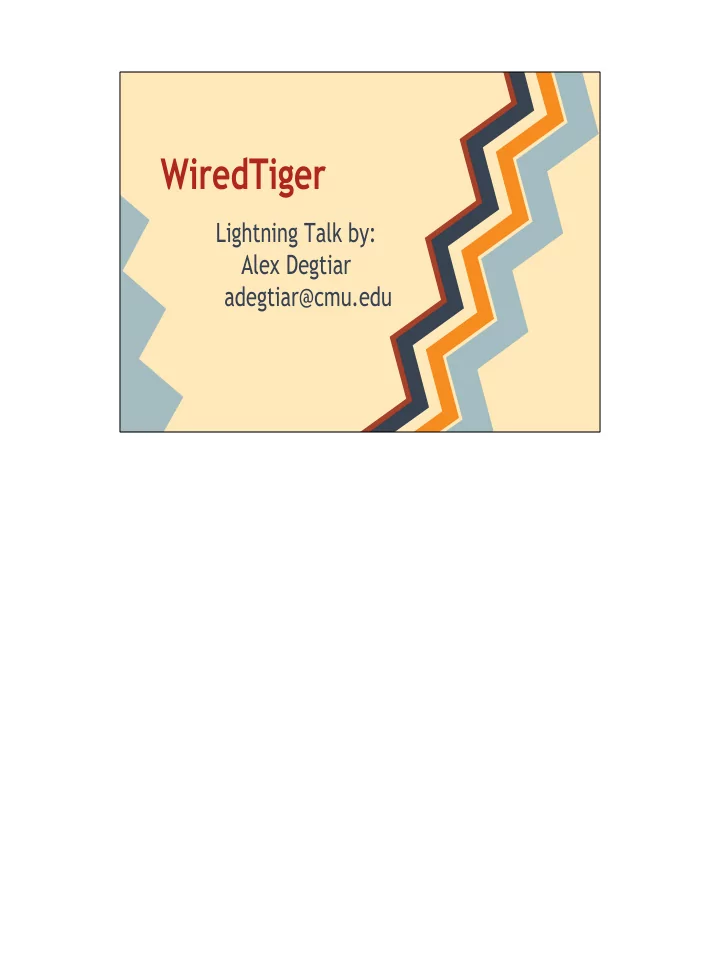

WiredTiger Lightning Talk by: Alex Degtiar adegtiar@cmu.edu
What is WiredTiger? NoSQL Storage Engine ● Underlying storage primitive of DBMS ● Local KVS ● e.g. Espresso and Tao Different from many of the talks given here ● Data store is a building block, underlying component of all DBMS - Big Data ● Can be used separately as a local KVS ● Example: Espresso and TAO stores in MySQL(InnoDB) for Storage Layer
Why WiredTiger? ● Rethink engine for modern hardware ○ Many cores - scalability ○ Importance of RAM and I/O efficiency ○ Efficient power consumption RAM - systems with more RAM, I/O expensive, try to maximize efficient use of memory
Underlying Storage ● Row-oriented ○ B-tree ○ write-optimized ● Column-oriented ○ store column groups in separate files ○ read-optimized ● Log-structured merge trees, bloom filters ○ write-optimized, sustained throughput Mix and match, transaction LSM same idea as BigTable (though LSM far predates it)
In-memory Optimizations ● Multi-core scalability ● Lock-free / non-blocking algorithms ● No in-place updates ● Maximize cache efficiency Increasingly/efficiently utilize RAM compression, variable sized tree nodes..
On-disk Optimizations ● Efficient I/O ○ Compression ○ Column store ○ Large, variable-sized chunks ● LSM tree structures Making I/O more valuable Compression especially with column stores, which lend themselves LSM - SSD
Conclusions ● Modern NoSQL Storage Engine ● Utilizes many cores, RAM, and I/O efficiently ● Mixed storage formats (B-tree, Column, LSM) ● High performance vs. other engines LevelDB, InnoDB
References ● WiredTiger website: http://source.wiredtiger.com/1.4.2/architecture.html ● HPTS 2013 WiredTiger presentation (several slides based on these + diagram): http://www.hpts.ws/papers/2013/WiredTiger-HPTS.pdf ● Benchmarks: https://github.com/wiredtiger/wiredtiger/wiki/LevelDB- Benchmark
Recommend
More recommend